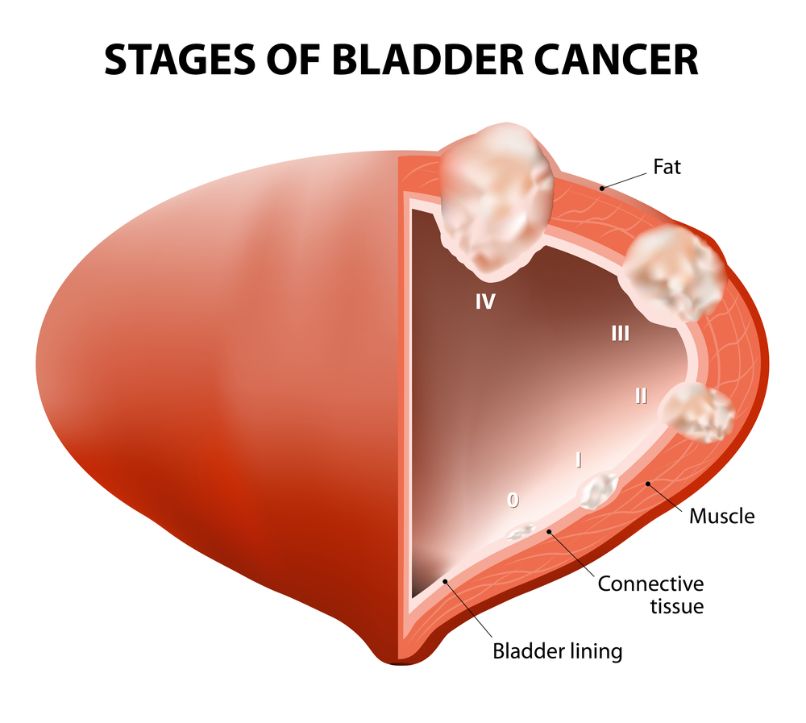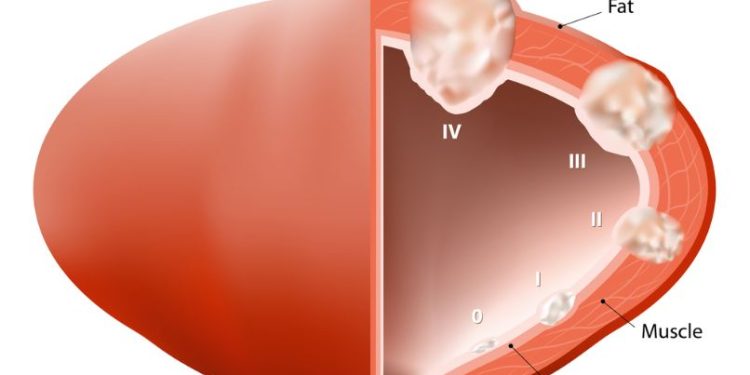Cancer starts in cells that grow and develop out of control, forming tumours or abnormalities that can damage other parts of the body. Bladder cancer begins in the tissues of the bladder, a hollow organ in the lower abdomen that stores urine (the waste product of the body’s normal metabolic processes) until it is passed out of the body through tubes called ureters. Bladder cancer can also spread to surrounding muscles and other organs.
Bladder cancer is the seventh most common type of cancer in people living in developed countries, and it can often be diagnosed at an early stage. Some people with bladder cancer may experience no symptoms, while others may have blood in their urine (haematuria), pain when passing urine or problems with urinating (urinary retention).
Health professionals usually arrange the first tests to check for signs of bladder cancer, including a physical examination and a rectal exam. The results of these tests will help doctors decide whether further investigations are needed, and if they do, what treatment options are available.
The most common symptom of bladder cancer is the presence of blood in the urine, which may be a small amount or a lot and may come and go. Other symptoms include a burning sensation when you pass urine, or pain in the area of your lower abdomen or back. If you experience any of these symptoms, see your GP as soon as possible.

Your doctor will ask you about your past health, symptoms and family history. They will then carry out a number of diagnostic tests to assess your general health and find out more about the extent of the cancer in your bladder. These tests will include a magnetic resonance imaging test (MRI), which uses a magnet and radio waves to take detailed images of your bladder. A computed tomography scan (CT scan) and a chest X-ray will be used to examine whether the cancer has spread to other areas of your body. You may also have a bone scan, which works in a similar way to a chest X-ray, but checks for signs of cancer in your bones.
If your bladder cancer is at an early stage and has not yet spread beyond the lining of your bladder, you will have surgery to remove any tumours. You might have chemotherapy before this operation to shrink the tumours and reduce how much tissue is removed during surgery. This is called preoperative therapy or neoadjuvant therapy.
After your surgery, you will have follow-up appointments to check for cancer in your bladder using a cystoscopy. You might have chemotherapy after this as well, to prevent the cancer returning.
You might have radiation to kill any remaining cancer cells and control your symptoms if your cancer has spread further when it is diagnosed. You might have this combined with chemotherapy (chemoradiation therapy) or on its own. At Dana-Farber Brigham Cancer Center, we use 3D imaging radiation therapy, also known as intensity modulated radiation therapy or IMRT, to target your tumour with extreme precision and limit damage to healthy tissue around it.









